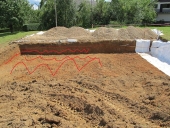
















Paramount Natural Design-Build Architect, Engineering Services, GC, LLC.








Paramount Natural Design-Build Architect, Engineering Services, GC, LLC.








Paramount Natural Design-Build Architect, Engineering Services, GC, LLC.









Paramount Natural Design-Build Architect, Engineering Services, GC, LLC.








Paramount Natural Design-Build Architect, Engineering Services, GC, LLC.




Paramount Natural Design-Build Architect, Engineering Services, GC, LLC.




Paramount Natural Design-Build Architect, Engineering Services, GC, LLC.





Paramount Natural Design-Build Architect, Engineering Services, GC, LLC.












Paramount Natural Design-Build Architect, Engineering Services, GC, LLC.








Paramount Natural Design-Build Architect, Engineering Services, GC, LLC.








 . We use to have a lime expert out here named Bill Bradberry goggle some of his thread, he lived in a COB home too. Getting a little out of my league I'm more of designer than tradesman. From my conversations with him you want to install it on a wet surface and keep wetting it since it gets harder as it hydrates or absorbs CO2. He said 2-4 weeks wetting twice daily that is why I don't use it often. You are mixing in soil and using it as a earth_lime plaster the test will be how well it adheres to the COB you have. So I'd say keep it all wet a while using a hose.
. We use to have a lime expert out here named Bill Bradberry goggle some of his thread, he lived in a COB home too. Getting a little out of my league I'm more of designer than tradesman. From my conversations with him you want to install it on a wet surface and keep wetting it since it gets harder as it hydrates or absorbs CO2. He said 2-4 weeks wetting twice daily that is why I don't use it often. You are mixing in soil and using it as a earth_lime plaster the test will be how well it adheres to the COB you have. So I'd say keep it all wet a while using a hose.
Paramount Natural Design-Build Architect, Engineering Services, GC, LLC.

|
What do you have to say for yourself? Hmmm? Anything? And you call yourself a tiny ad.
Homestead Pigs Course
https://permies.com/wiki/365748/Homestead-Pigs
|



